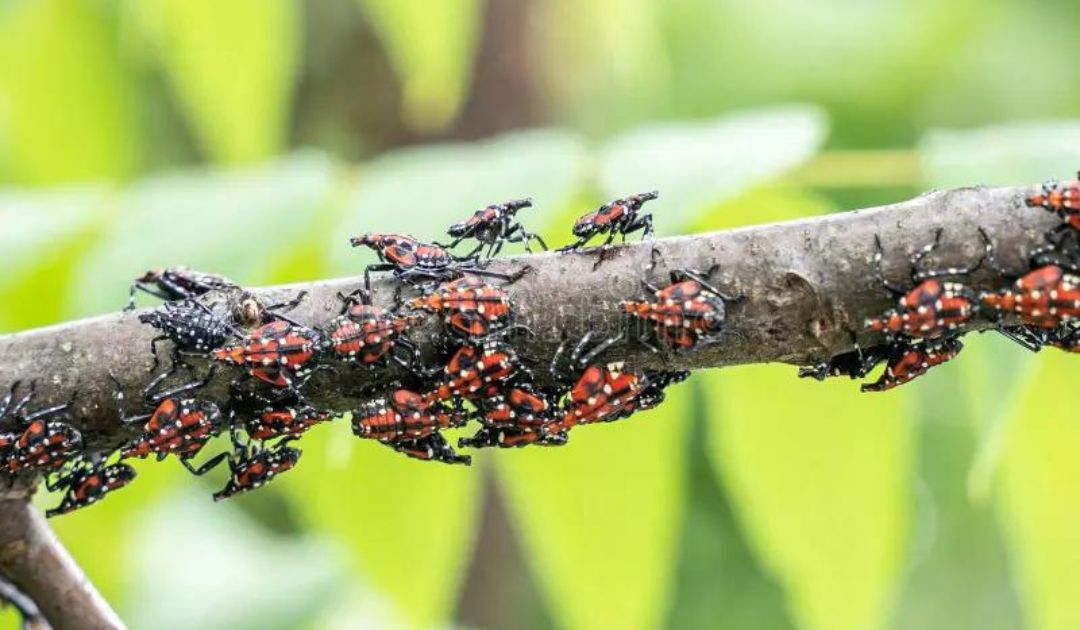A four-year study from Penn State University recently published in the journal Environmental Entomology shows spotted lanternflies have no long-term effects on forests or ornamental trees.
The article is titled “Effects of long-term feeding by spotted lanternfly (Hemiptera: Fulgoridae) on ecophysiology of common hardwood host trees”. The abstract:
While the invasive spotted lanternfly, Lycorma delicatula (White) [Hemiptera: Fulgoridae], continues to expand its range in the United States, there remains a knowledge gap regarding the economic threat that this pest presents to forest ecosystems and production nurseries. L. delicatula uses several common hardwood trees as hosts and a previous study found that short-term feeding can reduce growth of young maple saplings. Herein, long-term feeding over 4 consecutive seasons significantly reduced diameter growth and below-ground starch storage in roots of young silver maples (Acer saccharinum L.), weeping willows (Salix babylonica L.), river birches (Betula nigra L.), and trees of heaven (Ailanthus altissima [Mill.] Swingle) in response to L. delicatula feeding pressure in a density-dependent manner. In Year 3 when feeding pressure was the lowest, silver maple and willow recovered with greater diameter growth than in Year 2. Nutrients essential for photosynthesis and growth (iron, sulfur, and phosphorus) were reduced in leaves of all tree species compared to controls in the second year. This 4-yr study represents a worst-case scenario in which L. delicatula fed on the same trees for 4 consecutive growing seasons. In the wild, population numbers can vary greatly from year to year on individual trees and they move frequently among hosts (until autumn when they settle on A. altissima or other late-season hosts that have not yet senesced). Thus, we would not expect negative impacts of unconfined L. delicatula in natural settings on forest or ornamental trees to be as marked as reported here.
Penn State entomology professor Kelli Hoover said the new study “is the first to look at the long-term impacts of feeding pressure on Northeastern hardwoods, and our results suggest that we are unlikely to see big impacts on the growth of trees.”
None of the native trees in the study, including silver maple, weeping willow and river birch, as well as the non-native tree of heaven, which is the favorite of lanternflies, died. The trees did see reduced growth for the first two years, but the native trees recovered when feeding was less intense.
Spotted lanternflies are native to China and were first discovered in the United States in Berks County in 2014. They have since expanded across Pennsylvania and beyond, and Southwestern Pennsylvania has seen swarms of the insects since 2019. While Southeastern Pennsylvania had large numbers of lanternflies in the late 2010s, the insects have largely moved out of that area and are now more prevalent in the Pittsburgh region.

